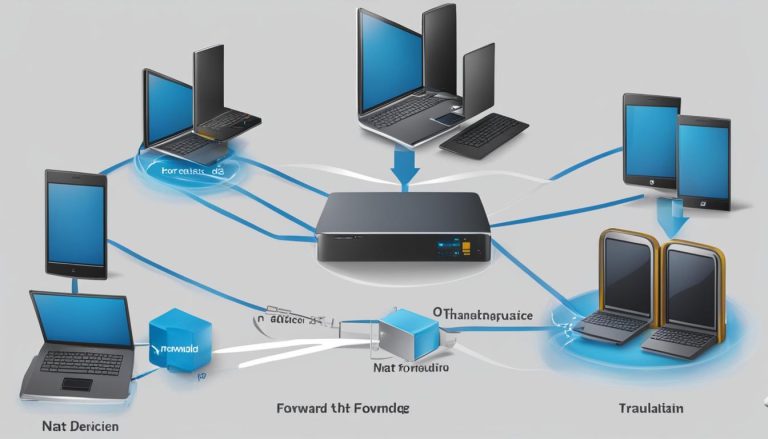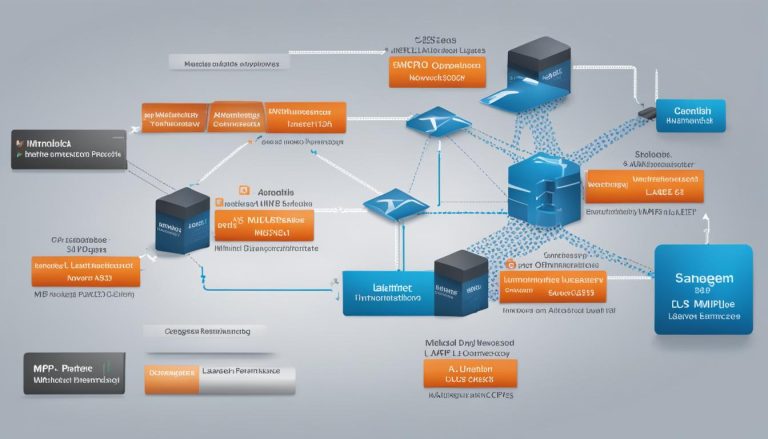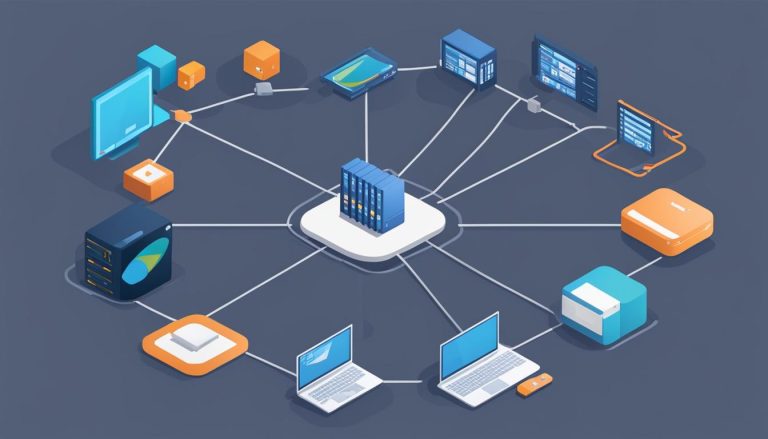As an AI journalist, I’m intrigued by the fascinating world of Natural Language Processing (NLP). It is an essential technology that allows computers to comprehend and interpret human language. By combining computational linguistics with machine learning and deep learning models, NLP enables us to process both text and voice data, extracting meaning and intent.
NLP has revolutionized various applications, including language translation, speech recognition, sentiment analysis, and virtual assistants. Its intricacies are evident in tackling complex challenges like word sense disambiguation, co-reference resolution, and part-of-speech tagging.
Key Takeaways:
- Natural Language Processing (NLP) is an AI technology that enables computers to understand and interpret human language.
- It combines computational linguistics with machine learning and deep learning models.
- NLP is used in various applications such as language translation, speech recognition, sentiment analysis, and virtual assistants.
- It faces challenges like word sense disambiguation, co-reference resolution, and part-of-speech tagging.
- NLP has the potential to revolutionize how we communicate with machines and make our daily lives more efficient and convenient.
NLP Tasks and Techniques
Natural Language Processing (NLP) encompasses a range of tasks and techniques that enable computers to understand and process human language effectively. These tasks play a vital role in enabling computers to interpret and extract meaning from text or voice data, facilitating various applications.
Speech recognition is a fundamental NLP task that involves converting spoken language into written text. This technology is utilized in voice assistants like Siri and Google Assistant, enabling users to interact with their devices using natural language. Part-of-speech tagging is another key task that involves categorizing words based on their grammatical roles, such as nouns, verbs, or adjectives. This information is crucial for understanding the structure and meaning of sentences.
Word sense disambiguation is an essential NLP technique that resolves the ambiguity of words with multiple meanings based on the context in which they are used. This enables accurate interpretation and understanding of text. Named entity recognition is another important task that involves identifying and classifying named entities such as people, organizations, or locations in text. Co-reference resolution is the task of determining whether two or more words refer to the same entity, enhancing the comprehension of textual information.
Sentiment analysis is an NLP task that gauges the emotional tone and sentiment expressed in text. This technique is widely used in social media monitoring and customer feedback analysis to understand public opinion and sentiment towards products or services. Natural language generation is a technique that enables computers to generate human-like text based on structured information. This is used in applications such as chatbots and text summarization, where machines generate relevant and coherent text responses.
| NLP Tasks | NLP Techniques |
|---|---|
| Speech Recognition | Converts voice data into text |
| Part-of-Speech Tagging | Categorizes words based on grammatical roles |
| Word Sense Disambiguation | Resolves ambiguity of words with multiple meanings |
| Named Entity Recognition | Identifies and classifies named entities |
| Co-reference Resolution | Determines if words refer to the same entity |
| Sentiment Analysis | Analyses emotional tone and sentiment in text |
| Natural Language Generation | Generates human-like text based on structured information |
NLP Tools and Approaches
When it comes to Natural Language Processing (NLP), there are various tools and approaches that can be employed to effectively process and understand human language.
Python: A Powerful Programming Language
Python, a versatile and widely-used programming language, offers a range of tools and libraries that are invaluable for NLP tasks. Known for its simplicity and readability, Python is a preferred choice among developers in the field of NLP. Its extensive collection of libraries and frameworks, coupled with its ease of use, make it an ideal choice for both beginners and experts in the field.
One of the most popular NLP libraries in Python is the Natural Language Toolkit (NLTK). It provides a rich set of tools and resources specifically designed for building NLP programs. From tokenization and part-of-speech tagging to semantic reasoning, NLTK offers a comprehensive suite of functions to process and analyze text data.
Statistical NLP and Machine Learning
NLP also utilizes statistical techniques and machine learning algorithms to extract meaning from unstructured text and voice data. Statistical NLP involves the use of probabilistic models and algorithms to analyze and predict patterns in language data. By applying statistical methods, NLP systems can learn from large datasets and make accurate predictions based on patterns and probabilities.
Machine learning, a subset of artificial intelligence, plays a crucial role in NLP. It involves training models on large datasets to enable computers to automatically learn and improve over time. Deep learning, a type of machine learning that focuses on neural networks, has significantly advanced NLP by enabling systems to understand and process language in a more human-like manner.
Deep Learning for NLP
Deep learning models, based on neural networks, have revolutionized NLP by enabling computers to process and understand language at a deeper level. These models can learn intricate linguistic features, such as word semantics and syntax, by training on massive amounts of labeled data. With deep learning, NLP systems can perform tasks such as sentiment analysis, language translation, and text summarization with high accuracy and efficiency.
| NLP Tools | NLP Approaches |
|---|---|
| Python | Statistical NLP |
| Natural Language Toolkit (NLTK) | Machine Learning |
| Deep Learning |
In conclusion, the tools and approaches used in NLP, such as Python, NLTK, statistical NLP, machine learning, and deep learning, are essential for processing and understanding human language. These technologies enable computers to analyze and extract meaning from text and voice data, opening up a wide range of applications in various industries.
NLP Use Cases
As natural language processing (NLP) continues to advance, its applications in various industries have grown exponentially. Let’s explore some of the key use cases where NLP is making a significant impact:
Spam Detection
NLP plays a crucial role in identifying and filtering out spam or phishing emails. By analyzing the content, structure, and context of incoming messages, NLP algorithms can accurately classify emails as either legitimate or spam. This helps individuals and businesses protect themselves from malicious attacks, ensuring a safer digital environment.
Machine Translation
Language barriers are no longer a major obstacle thanks to NLP-powered machine translation tools. These tools use sophisticated algorithms to automatically translate text from one language to another with impressive accuracy. Popular translation services like Google Translate rely on NLP techniques to provide seamless communication and enable cross-cultural interactions.
Virtual Agents and Chatbots
NLP enables the development of virtual agents and chatbots that can understand and respond to human language. By combining speech recognition and natural language generation, these intelligent systems can interact with users, answer queries, and provide personalized assistance. Virtual agents like Siri and Alexa have become increasingly popular, enhancing user experiences and streamlining everyday tasks.
Sentiment Analysis
Companies are leveraging NLP for sentiment analysis, which involves analyzing the emotions and attitudes expressed in text data. By monitoring social media posts, customer feedback, and online reviews, businesses can gain insights into public opinion and sentiment towards their products or services. This allows them to identify areas for improvement, enhance customer satisfaction, and make data-driven decisions.
Text Summarization
In today’s information-rich world, NLP plays a crucial role in text summarization. By using algorithms that analyze the most important information in a text, NLP can condense large volumes of content into concise summaries. This has significant applications in news aggregation, research, and content curation, making it easier for individuals to consume and comprehend vast amounts of information.
These examples highlight just a few of the many use cases for NLP. From spam detection to machine translation, virtual agents to sentiment analysis, and text summarization, NLP continues to revolutionize how we interact with technology and process language.
Conclusion
After exploring the field of Natural Language Processing (NLP), I have come to understand its immense importance and wide range of applications. NLP is a crucial part of AI technology that allows computers to comprehend and interpret human language. By combining computational linguistics with machine learning and deep learning models, NLP enables systems to extract meaning and intent from text or voice data.
NLP finds its utility in various industries and scenarios. It facilitates language translation, speech recognition, sentiment analysis, virtual assistants, and much more. By analyzing unstructured text data, businesses can gain valuable insights and improve customer interactions through chatbots and virtual agents. NLP also plays a significant role in enhancing language translation services, helping people communicate effectively across language barriers.
The advancements in machine learning and deep learning algorithms have propelled NLP to new heights. As technology continues to evolve, NLP has the potential to revolutionize the way we interact with machines and make our daily lives more efficient and convenient. From spam detection to machine translation, NLP has become an integral part of our modern world, shaping the future of communication between humans and computers.
Summary
In summary, NLP is a vital technology that allows computers to understand and process human language. Its applications span across multiple industries, enabling businesses to extract insights, improve customer experiences, and break language barriers. As NLP continues to advance, it will undoubtedly play a significant role in shaping the future of AI and revolutionize the way we communicate with machines.
FAQ
What is Natural Language Processing (NLP)?
Natural Language Processing (NLP) is an AI technology that enables computers to understand and interpret human language.
What are some common NLP tasks and techniques?
NLP involves tasks such as speech recognition, part of speech tagging, word sense disambiguation, named entity recognition, co-reference resolution, sentiment analysis, and natural language generation.
Are there any specific tools and approaches used in NLP?
Python is a popular programming language for NLP, with tools like the Natural Language Toolkit (NLTK). Statistical NLP and machine learning are also utilized in NLP.
How is NLP used in real-world applications?
NLP has various applications, including spam detection, machine translation, virtual agents, chatbots, sentiment analysis, and text summarization.
Cathy is a senior blogger and editor in chief at text-center.com.


